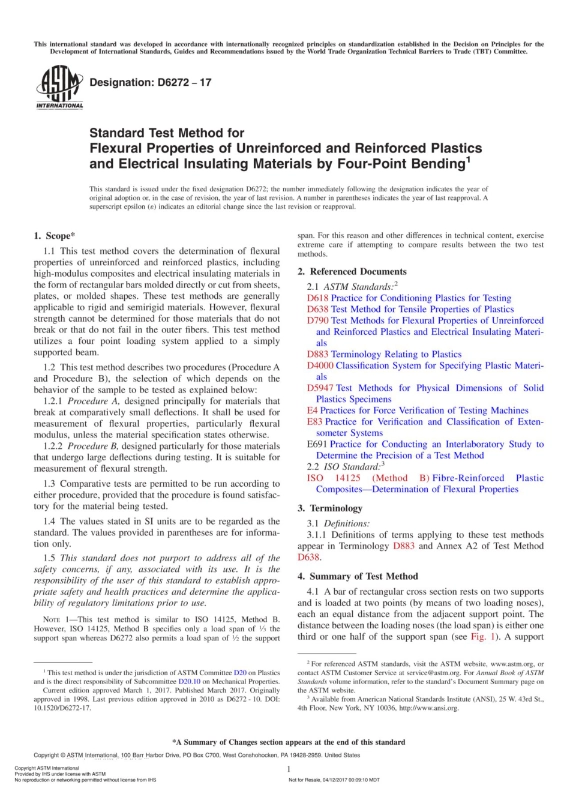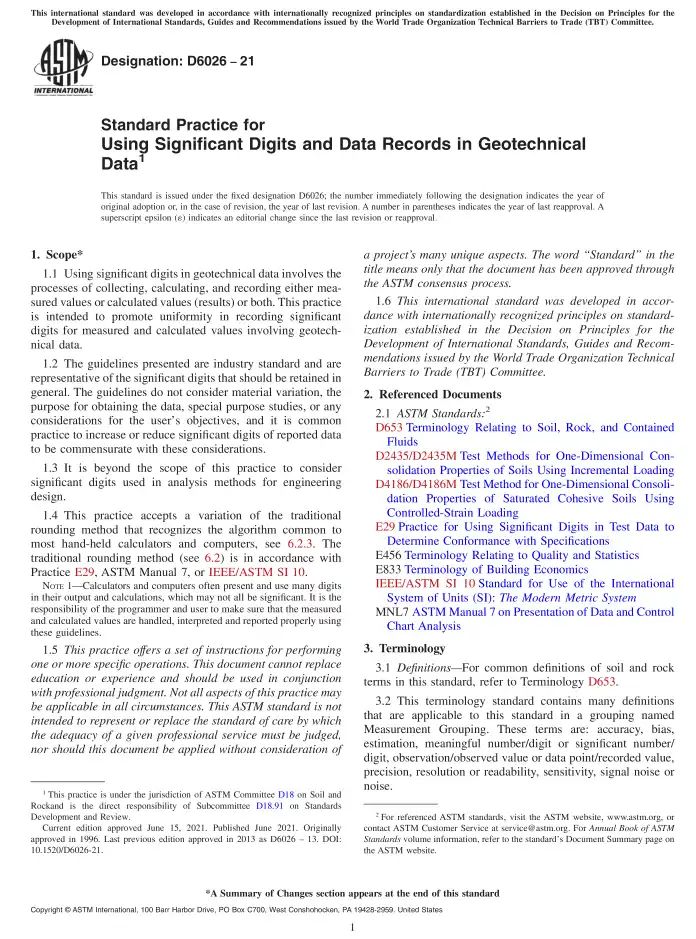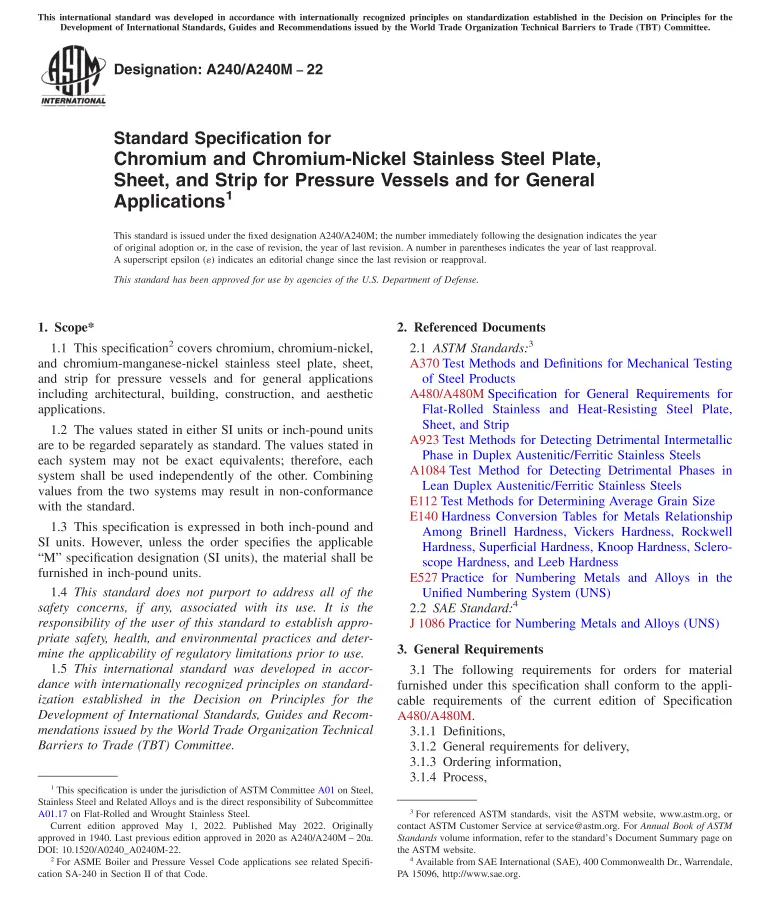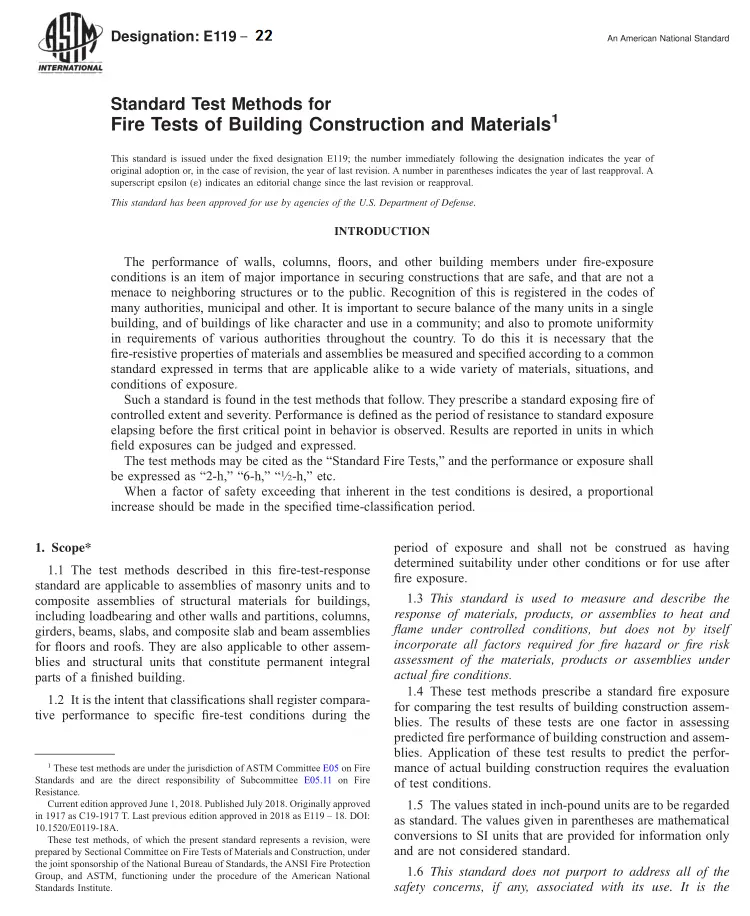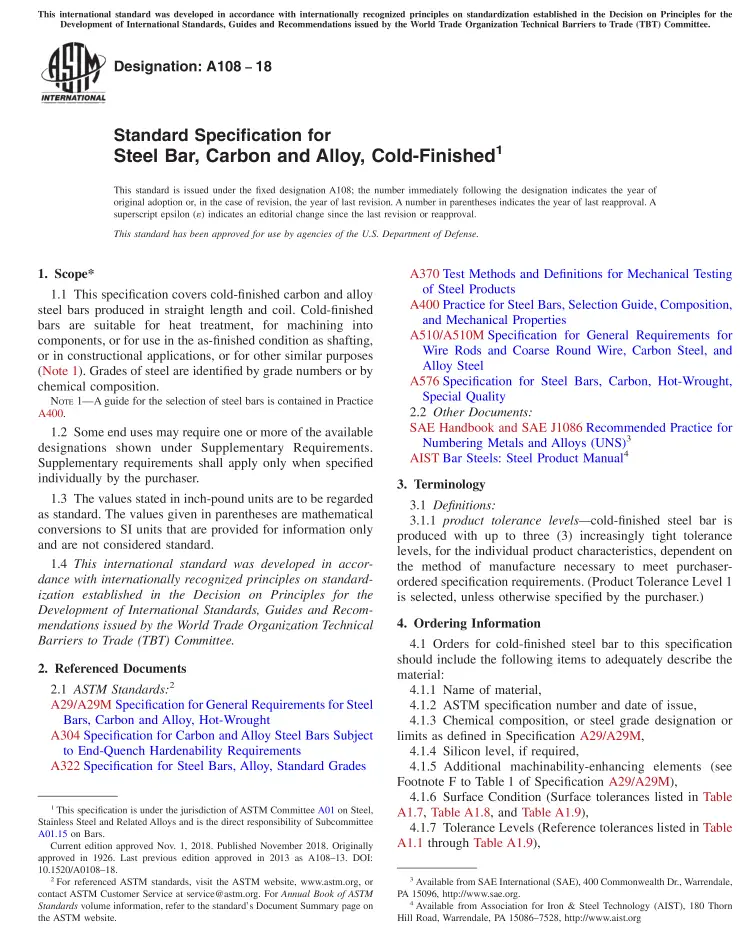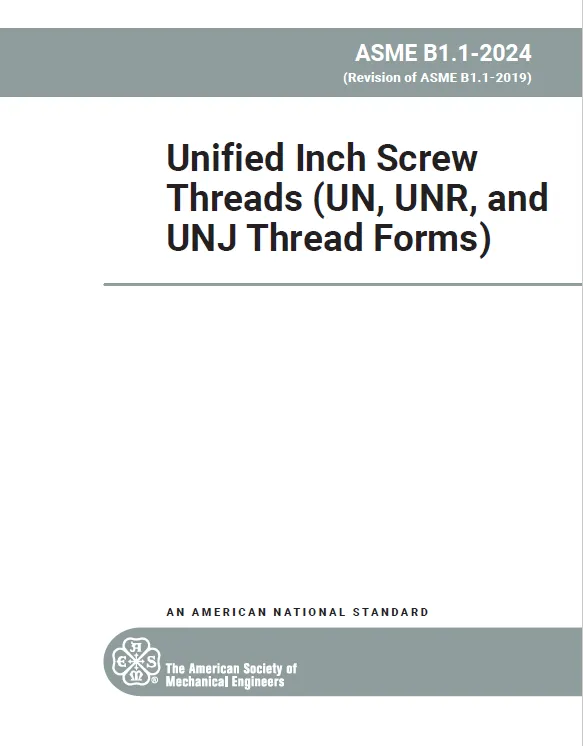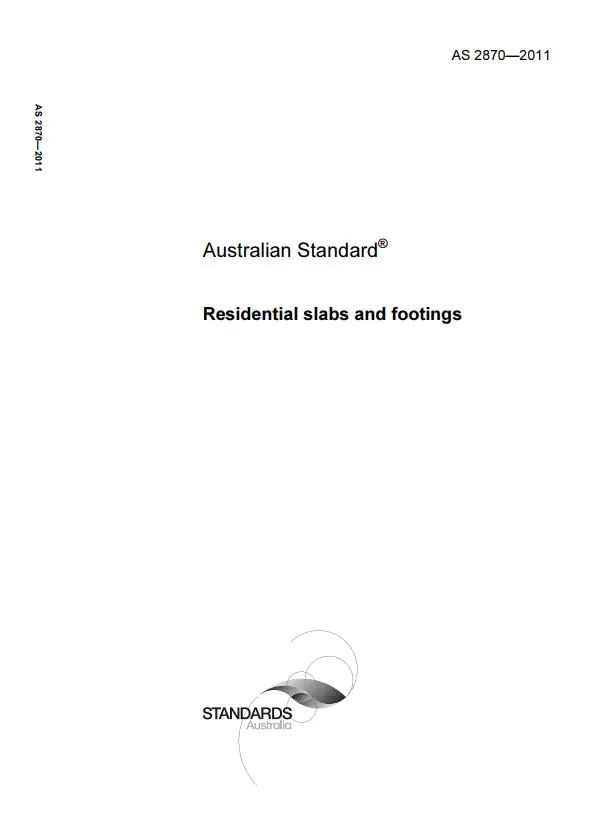ASTM D6272, 2017 Edition – Standard Test Method for Flexural Properties of Unreinforced and Reinforced Plastics and Electrical Insulating Materials by Four-Point Bending
This test method covers the determination of flexural properties of unreinforced and reinforced plastics, including high-modulus composites and electrical insulating materials in the form of rectangular bars molded directly or cut from sheets, plates, or molded shapes. These test methods are generally applicable to rigid and semirigid materials. However, flexural strength cannot be determined for those materials that do not break or that do not fail in the outer fibers. This test method utilizes a four point loading system applied to a simply supported beam.
This test method describes two procedures (Procedure A and Procedure B), the selection of which depends on the behavior of the sample to be tested as explained below:
Procedure A, designed principally for materials that break at comparatively small deflections. It shall be used for measurement of flexural properties, particularly flexural modulus, unless the material specification states otherwise.
Procedure B, designed particularly for those materials that undergo large deflections during testing. It is suitable for measurement of flexural strength.
Comparative tests are permitted to be run according to either procedure, provided that the procedure is found satisfactory for the material being tested.
The values stated in SI units are to be regarded as the standard. The values provided in parentheses are for information only.
This standard does not purport to address all of the safety concerns, if any, associated with its use. It is the responsibility of the user of this standard to establish appropriate safety, health, and environmental practices and determine the applicability of regulatory limitations prior to use.
NOTE 1—This test method is similar to ISO 14125, Method B. However, ISO 14125, Method B specifies only a load span of 1⁄3 the support span whereas D6272 also permits a load span of 1⁄2 the support span. For this reason and other differences in technical content, exercise extreme care if attempting to compare results between the two test methods.
This international standard was developed in accordance with internationally recognized principles on standardization established in the Decision on Principles for the Development of International Standards, Guides and Recommendations issued by the World Trade Organization Technical Barriers to Trade (TBT) Committee.
General Product Information:
| Revision | 2017 Edition |
| Document Type | |
| Document Language | English |
| Pages | 9 |
| Publisher | ASTM International (ASTM) |
| Status | Current |

